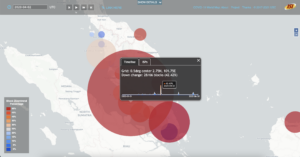On December 15, 2022, Tarang Saluja will present the paper “Differences in Monitoring the DNS Root Over IPv4 and IPv6” (by Tarang Saluja, John Heidemann, and Yuri Pradkin) at the IEEE National Symposium for NSF REU Research in Data Science, Systems, and Security.
From the abstract:

The Domain Name System (DNS) is an essential service for the Internet which maps host names to IP addresses. The DNS Root Sever System operates the top of this namespace. RIPE Atlas observes DNS from more than 11k vantage points (VPs) around the world, reporting the reliability of the DNS Root Server System in DNSmon. DNSmon shows that loss rates for queries to the DNS Root are nearly 10% for IPv6, much higher than the approximately 2% loss seen for IPv4. Although IPv6 is “new,” as an operational protocol available to a third of Internet users, it ought to be just as reliable as IPv4. We examine this difference at a finer granularity by investigating loss at individual VPs. We confirm that specific VPs are the source of this difference and identify two root causes: VP islands with routing problems at the edge which leave them unable to access IPv6 outside their LAN, and VP peninsulas which indicate routing problems in the core of the network. These problems account for most of the loss and nearly all of the difference between IPv4 and IPv6 query loss rates. Islands account for most of the loss (half of IPv4 failures and 5/6ths of IPv6 failures), and we suggest these measurement devices should be filtered out to get a more accurate picture of loss rates. Peninsulas account for the main differences between root identifiers, suggesting routing disagreements root operators need to address. We believe that filtering out both of these known problems provides a better measure of underlying network anomalies and loss and will result in more actionable alerts.
Original data from this paper is available from RIPE Atlas (measurement ids are in the paper). We are publishing new results daily on our website (from the RIPE data).
This work was done while Tarang was on his Summer 2022 undergraduate research internship at USC/ISI, with support from NSF grant 2051101 (PI: Jelena Mirkovich). John Heidemann and Yuri Pradkin’s work is supported by NSF through the EIEIO project (CNS-2007106). We thank Guillermo Baltra for his work on islands and peninsulas, as seen in his arXiv report.

